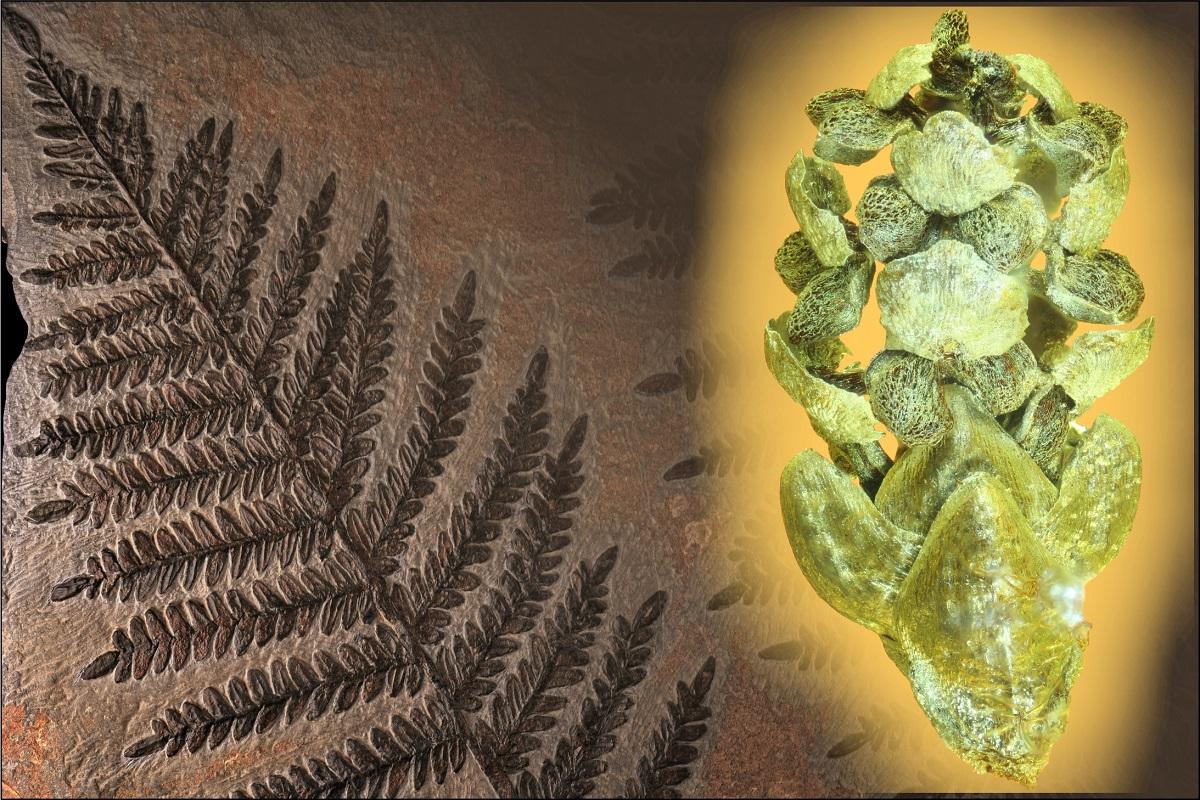Research Topic
Plants are the basis of all life, as they are responsible for 80% of the global biomass. Through their photosynthesis performance, plants have a major influence on global climate events, in the present day as well as in the geological past. Plants play a key role in better understanding the evolution of terrestrial ecosystems in Earth's history. We are interested in the evolution of (seed) plants in terrestrial ecosystems from the Paleozoic to the Cenozoic. We aim to understand evolution dynamics of plants and vegetation communities in the background of global change through Earth history. We investigate fossil plants with modern research techniques to decipher anatomical and morphological features that provide information on plant architecture, physiology, and paleoecology. Our research is embedded in an interdisciplinary framework to reconstruct complex interactions of the physical and biological environment, as well as biodiversity of ancient terrestrial ecosystems.
Research Focus
- Reconstruction of late Paleozoic fossil ecosystems in central Europe
The late Paleozoic is a period of significant global change. Fossil ecosystems and its biota provide detailed insights to the ancient living world and environmental processes occurring therein. The research focus is on two exceptionally -preserved fossil ecosystems of lower Permian age from Germany, the Chemnitz Fossil Forest and the Bromacker Fossil Lagerstätte. Both ecosystems are supposed to have nearly the same age (290 million yrs), but significantly differ in structure and environmental conditions. With multi-disciplinary approaches in the fields of sedimentology, geochemistry, and paleobotany we aim to reconstruct the complexity of interactions between geosphere, biosphere and atmosphere.
- Plant physiology of early Permian medullosan seed ferns
By using anatomical parameters and whole-plant reconstructions of a particular group of seed ferns, we aim to develop new methods on quantifying (fossil) plant hydraulic capacities. The results are used to evaluate the water demand, drought resistance and evaporation rate of ancient plants that got extinct millions of years ago. The results will help to better understand the water cycle in ancient tropical terrestrial ecosystems, as well as the plant-atmosphere interactions.
- Reconstruction and evolution of Amber forests
Amber is fossilized tree resin and well known for exquisitely preserved inclusions. We study plant organs, such as flowers, fruits, leaves and twig portions from several amber localities, ranging from the Cretaceous to the Paleogene of Asia and Europe. We mainly use light microscopy and computed tomography to analyze the morphology of the plant inclusions, which facilitates their identification. These plant inclusions are essential indicators to draw conclusions about the vegetation, habitat types and climate of the amber source area, the so-called amber forests. This allows us to reconstruct the evolution of forests and their biodiversity in time and space. These projects are funded by the German Research Foundation (DFG):
https://www.museumfuernaturkunde.berlin/en/science/amber-forests
- Preservation and conservation of amber
Amber is particularly important for research disciplines, such as palaeontology, botany and zoology, as it preserves a large range of fossil inclusions (e.g. plants, arthropods, fungi) three-dimensionally and with great fidelity. Amber collections are therefore a valuable scientific, cultural and global heritage. However, amber is very sensitive to a variety of environmental factors, including light, drought or temperature fluctuations. We developed specific recommendations on how to prepare amber and its inclusions, as well as best practices to detect deterioration and to preserve amber collections. You can access this paper here:
https://www.sciencedirect.com/science/article/pii/S0012825221001549?via%3Dihub
Lab facilities and research techniques
- Rock preparation lab: (thin) sections of anatomically preserved (fossil) plant parts and sedimentary rocks
- Amber preparation lab: grinding, polishing and embedding of amber
- HF preparation lab: maceration of cuticles and other organic plant remains
- Light microscopy lab: stereomicroscope, compound microscope, polarisation microscope; each with camera system
- Scanning Electron Microscopy (SEM) with low-vacuum chamber
- Computed Tomography Lab: microCT scanning of plant fossils
- Geochemical laboratories: element and isotope analyses of organic and inorganic samples
